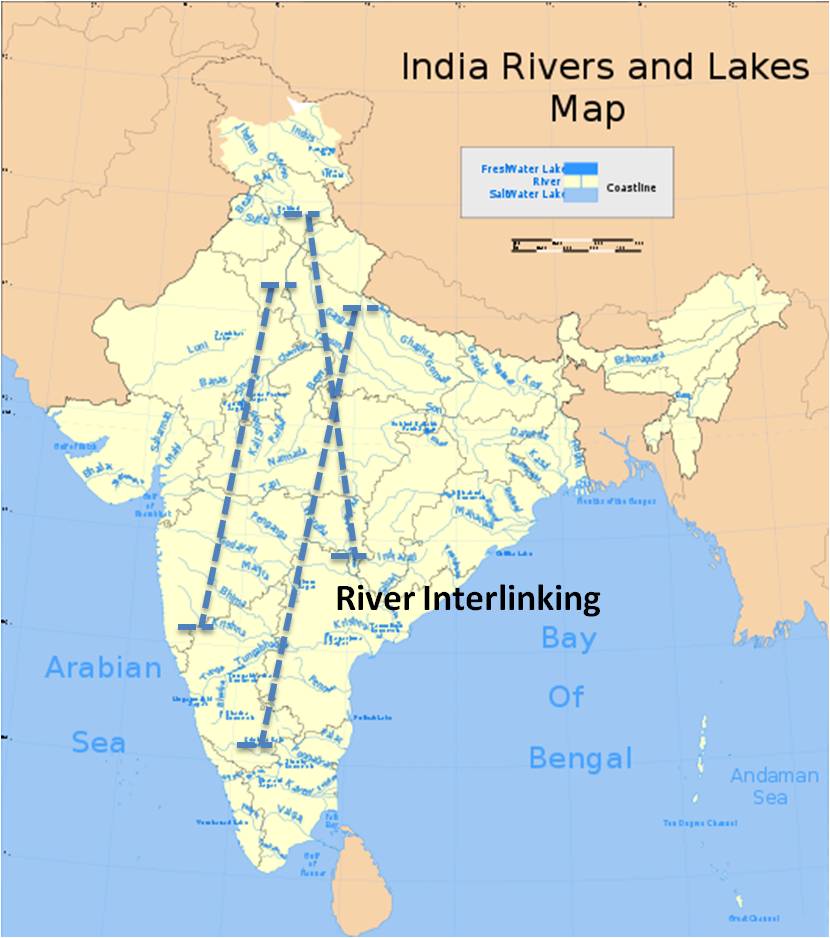Can River Interlinking solve India’s water woes?

Every nation today needs to address the water crisis. In the near future, it would not be surprising if the price of water were to overshoot that of oil. Providing safe drinking water has been a challenge in under-developed and developing countries. To read more about water scarcity and why India needs to address it, Click here
India accounts for 15% of the world population and 4% of the world’s water resources. If annual per capita water availability is below 1700 then region is water stressed and if below 1000 then the region is termed as water scarce. Per capita annual water availability (cu.m/capita/year) in India is expected to decrease to around 1200 by 2030.
So, India is likely to suffer from water scarcity in future. Add to this the rising population and the pace at industrialization is progressing in the country, water scarcity is a very real possibility.
“The Irrigation Commission, 1972 has identified 67 drought prone districts comprising of 326 Talukas located in 8 States having an area of 49.73 M.” For more information- Click here
The idea that river inter linking may effectively solve water woes for India is not new. It was first suggested by British Captain Dastur’s plan of “Garland Canal” and by Dr. K.L.Rao, the then Minister for Irrigation. Inter linking within the Indian territory maybe an easy affair but will require dialogue in case of shared rivers. India already has water sharing agreements with nations such as Pakistan and Bangladesh and these have been honoured even during times of war. If the current water sharing agreements can be extended with neighbors to bring on board an international river inter linking project, it will be an added advantage.
China is one nation that has a very good water policy. Some of this has to do with the fact that the Chinese premier is trained hydrologist. China is on a dam building spree including the massive Xiaowan dam.
The Government set up a National Water Development agency which formulated a National Perspective Plan consisting of Himalayan River Development and Peninsular River Development.
Critics argue that the enormous costs involved is what makes the project a deterrent as India can ill afford to spend so much money. Further ecological and environmental considerations are also pointed out. However, to ensure optimum use of water, interlinking can be a good alternative. In fact, it might be a better idea to implement the plan in steps and not for the entire country at one go.


